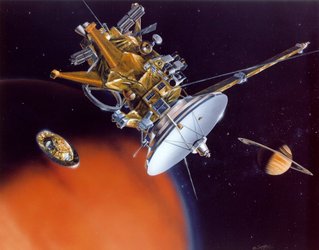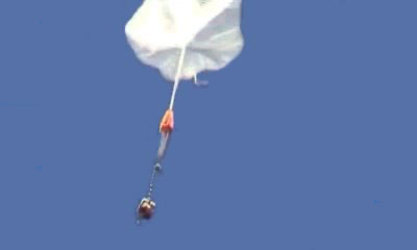Revealing Titan's surface
These pictures were created from a sequence of images acquired by the NASA/ESA/ASI Cassini-Huygens spacecraft's cameras on 25 October 2004, 38 hours before its closest approach to Titan.
They illustrate how the details of Titan's surface can be revealed through image processing techniques. The first picture has undergone only basic cleaning of corrupted pixels and imperfections in the camera's charge coupled device, a light-sensitive detector similar to those found in digital cameras.
In the middle frame, multiple images were used to enhance the contrast detected from Titan's surface and to reduce the blurring effect of atmospheric haze. The last picture has been further processed to sharpen the edges of features.
The processed images reveal sharp boundaries between dark and light regions on the surface; there are no shadows produced by topography in these images. The bright area in the centre right is 'Xanadu', the region that has been observed previously from Earth and by Cassini-Huygens.
To the west of Xanadu lies an area of dark material that completely surrounds brighter features in some places. Narrow linear features, both dark and bright, can also be seen. It is not clear what geological processes created these features, although it seems thought that the surface is being shaped by more than impact craters alone.
The very bright features near Titan's south pole are clouds similar to those observed during the first Cassini-Huygens fly-by on 2 July 2004. The region on the left side of these images is being targeted by higher-resolution observations as Cassini-Huygens passes close to Titan later in the fly-by.
Credits: NASA/JPL/Space Science Institute












